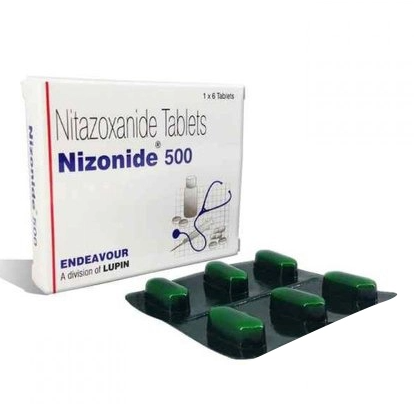Nitazoxanide has garnered significant attention due to its broad-spectrum antiparasitic and antiviral properties. Initially introduced as an antiparasitic agent, Nitazoxanide's versatility has led to its exploration as a potential treatment for various viral infections, including those caused by influenza, hepatitis, and even emerging viruses.
Nitazoxanide 200 effectiveness lies in its unique mechanism of action, making it a valuable asset in combatting infections. It operates by inhibiting the pyruvate:ferredoxin oxidoreductase (PFOR) enzyme in anaerobic organisms, such as protozoa and helminths. This interference disrupts energy production and other essential metabolic processes, ultimately leading to the death of these parasites. Additionally, Nitazoxanide has demonstrated inhibitory effects on viral replication, making it an intriguing candidate for antiviral therapy.
**2. Antiparasitic Applications
A. Protozoan Infections:
Nitazoxanide 500 efficacy against protozoan parasites, such as Giardia lamblia and Cryptosporidium parvum, has been extensively studied. These parasites cause gastrointestinal infections, leading to symptoms like diarrhea, abdominal pain, and dehydration. Nitazoxanide's ability to target these parasites by disrupting their energy metabolism has made it a valuable treatment option.
B. Helminthic Infections:
In addition to protozoa, Nitazoxanide has shown promise in treating helminthic infections, which involve parasitic worms like helminths. Examples include infections caused by tapeworms and flukes. Its unique mode of action sets it apart from conventional antiparasitic drugs, providing a fresh approach to tackling these infections.
**3. Antiviral Potential
In recent years, Nitazoxanide has emerged as a potential antiviral agent, with promising results against a range of viruses. Its ability to inhibit viral replication by disrupting various stages of the viral life cycle has caught the attention of researchers.
A. Influenza and Other Respiratory Viruses:
Nitazoxanide has demonstrated inhibitory effects against influenza A and B viruses, as well as other respiratory viruses. It interferes with viral hemagglutinin maturation, a crucial step in viral entry into host cells, thereby reducing viral infectivity.
B. Hepatitis Viruses:
The drug's antiviral properties extend to hepatitis B and C viruses, both of which pose significant public health challenges globally. Nitazoxanide has shown the ability to inhibit viral replication and reduce viral load in clinical studies, sparking interest in its potential role as a complementary therapy for hepatitis.
C. Emerging Viruses:
Researchers are exploring Nitazoxanide's effectiveness against emerging viruses, such as coronaviruses. While its role in managing these viruses is still being investigated, early studies suggest its potential to inhibit viral replication and mitigate the severity of infections.
**4. Current Research and Future Directions
The ongoing research on Nitazoxanide continues to unveil its potential applications. Clinical trials are exploring its antiviral efficacy against a variety of infections, shedding light on optimal dosages, treatment durations, and potential combinations with other drugs. Additionally, researchers are investigating Nitazoxanide's mechanism of action in detail to better understand how it inhibits viral replication and parasite growth.
Conclusion





Comments